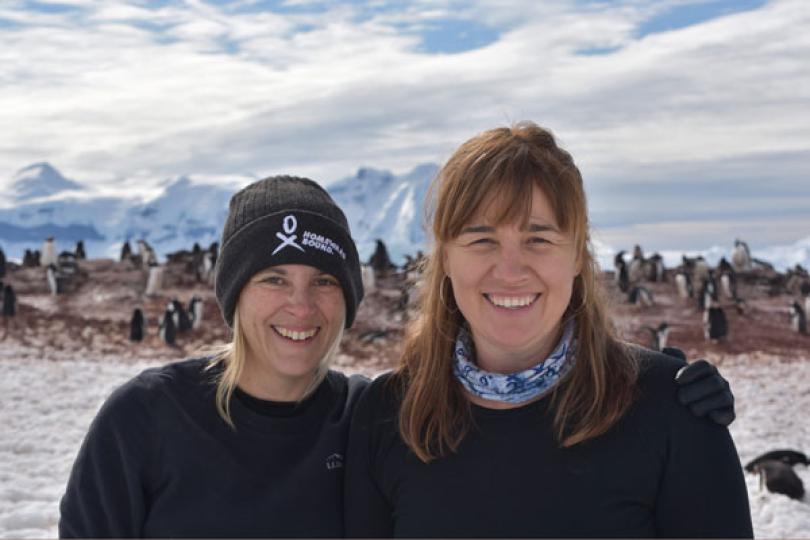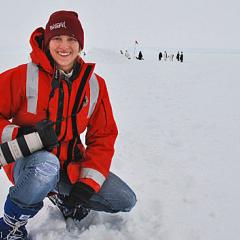Protect the Antarctic Peninsula - before it's too late
Editor's note: The following op-ed first appeared in Nature and was written by Fellow Cassandra Brooks and colleagues who participated in the Homeward Bound Project last December. The women's leadership project brings together a community of women leaders in science from across the world and culminates with a trip to the Antarctic Peninsula. Dr. Brooks was a faculty member on the project.
Among the windswept glaciers and icebergs of the western Antarctic Peninsula is an oasis of life. Threatened humpback and minke whales patrol the waters. Fish, squid and seals swim alongside noisy colonies of chinstrap, Adélie and gentoo penguins on the shore. It’s a complex web of life. All these species feed on small, shrimp-like crustaceans called Antarctic krill. And many are themselves prey for leopard seals, killer whales and predatory seabirds such as skuas and giant petrels.
This delicate and iconic ecosystem is in peril. The western Antarctic Peninsula (the northernmost part of the continent) is one of the fastest-warming places on Earth. In February, temperatures there reached a record 20.75 °C, with an average daily temperature that was 2 °C higher than the means for the preceding 70 years1. Most of the region’s glaciers are receding. And sea ice is dwindling — spring 2016 saw it retreat to the smallest extent since satellite records began in the 1970s. If carbon emissions keep climbing, in 50 years’ time, the area covered by sea ice will have halved and the volume of ice shelves will have shrunk by one-quarter2.
Heavy fishing is depleting parts of the region of the main food source, krill. The waters around the peninsula are home to 70% of the world’s Antarctic krill, the larvae of which shelter in the sea ice3. Their loss means hunger for many species. It even alters biogeochemical systems in the ocean, including the carbon cycle3. Krill feed on phytoplankton — microscopic marine algae that extract carbon from the atmosphere. The krill excrete pellets containing carbon and other nutrients, including fluoride, calcium and phosphorus, which are energy sources for a myriad of microorganisms3.
With human activity and construction also rising, the region’s precious biodiversity is at risk of being destroyed4. Preventive measures must be taken immediately, on sea and on land.
The first step is to protect the rich seas around the Antarctic Peninsula. A proposal to make them a marine protected area (MPA) is being discussed over the next two weeks by the Commission for the Conservation of Antarctic Marine Living Resources (CCAMLR), a group of governments that collectively manage the Southern Ocean’s resources. We urge them to act now.
Additional Resources
Press Release: https://www.sydney.edu.au/news-opinion/news/2020/10/19/protect-antarctica-now.html
Conversation article: https://theconversation.com/humans-threaten-the-antarctic-peninsulas-fragile-ecosystem-a-marine-protected-area-is-long-overdue-147671
Promotional video: https://youtu.be/E7XcImKxvEg
Project website: https://www.antarcticanow.org

